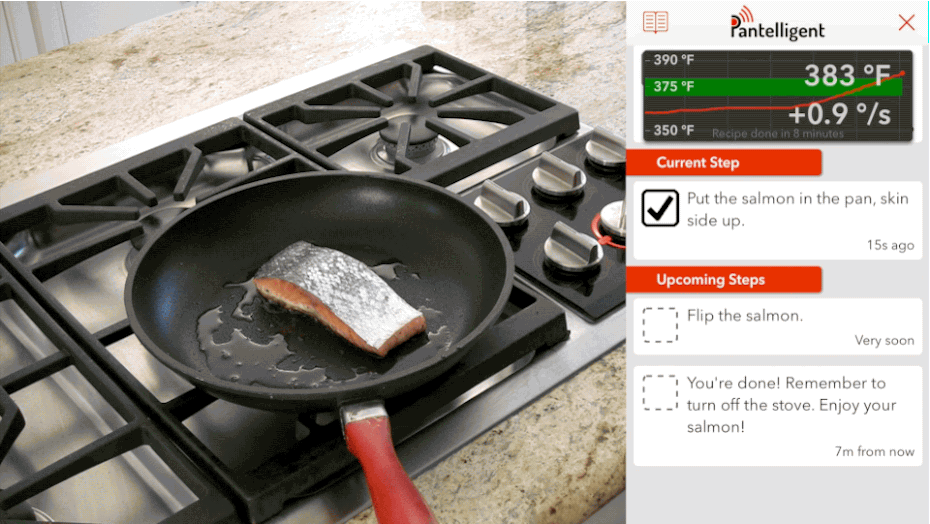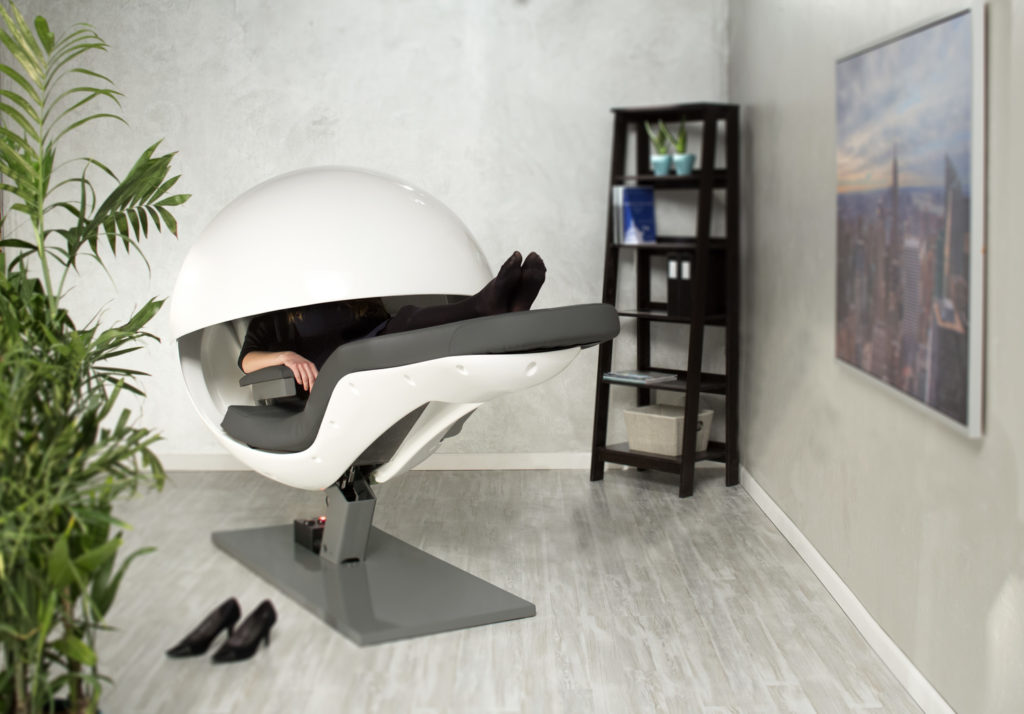Although science fiction offers many diverse visions of what suburbia will look like in the near future, the most popular portrayal still revolves around sleek, floating sky-mansions made of metal and glass, complete with helix-shaped staircases, a landing pad for your hover-car, gigantic ever-present TVs, and androids obediently folding laundry in front of a digital fireplace. But exactly how much of this will remain a fantasy?
For starters, let’s forget about houses being built above the cloud layer; up to 5% of the world population is terrified of heights, and oxygen deprivation at higher altitudes might raise a few child safety concerns.
So let’s examine a more realistic 21st-century domicile, beginning with the outside.
Construction
What sci fi got right:
As the world increasingly embraces sustainability, home construction will trend toward the repurposing of waste. Currently, eco-designers are exploring earthships — houses artistically crafted out of literal garbage. More than likely, researchers will simply discover how to distill trash into a universal building material akin to cement.
Some futurists aren’t limiting themselves to garbage in their effort to go clean and green. Evocative Design, a New York-based biomaterials firm, is attempting to develop a mushroom-based house constructed out of a fungus that is “stronger than concrete bricks and can withstand extreme temperatures.”
What sci fi got wrong:
With a world population approaching 9.8 billion by 2050, the inevitable housing crisis will force the construction industry to innovate. Apis Cor has recently managed to 3D-print a $10,000 house within 24 hours. This house, although cozy and livable, is by no means the chrome-and-glass super-residence featured in sci fi. Future housing will favor function over form, speedy construction over aesthetic exploration, and so most of us will have to settle for humble cookie-cutter homes.
Living Room
What sci fi got right:
Screens everywhere! Living room walls will not only display your favorite TV; the eventual rise of holographic technology — such as the voice-command projectors being patented by Amazon — will turn your den into an immersive AR environment for gaming, ambiance, shopping, or work. Smart walls will also revitalize the home of the future with ever-changing interactive wallpaper, ensuring that homeowners never again feel the regret of a bad paint job. All of this will, of course, be paired to your favorite mobile device and VR headset.
What sci fi got wrong:
Science fiction fails to mention the enormous amount of bandwidth that these smart walls and holoprojectors will devour. If your router barely handles a flat-screen and several mobile devices, it will be hard-pressed to stream entire three-dimensional spaces with photo-realistic, ultra-high-definition content. Wifi equipment must evolve to bear the exponentially huge amount of data; scientists might eventually unlock the sending of information via quantum entanglement, making bandwidth issues wholly obsolete. ISPs, meanwhile, will have the opportunity to exploit AR bundle deals.
Kitchen
Image from Pantelligent.com
What sci fi got right:
Contemporary chefs can already buy a frying pan that alerts their mobile devices when it’s time to flip their steak, or a smart fridge that senses when they’re almost out of eggs and updates the shopping list on their phones. Wireless interconnectivity between appliances will expand to the point where one tap on a recipe will automatically preheat your oven, dispense the proper ingredients in their correct amounts, scan their nutritional values and freshness, and provide step-by-step voice guidance through meal preparation.
What sci fi got wrong:
Popular sci fi likens “the future” to “space,” so we often see foodies of the future struggling like astronauts with dehydrated dinners, protein pellets, and instant chicken that magically sprouts from a powder. Realistically, the advancement of vertical farming in urban areas, combined with drone delivery, will allow more families to enjoy fresh, organic food on demand. Save the freeze-dried ice cream for your commute to Mars.
Bathroom
What sci fi got right:
Smart toilets will become commonplace not simply because of superficial features like seat warmers and LED lighting. The porcelain throne of the future will calculate every flush to save the maximum amount of water, protect your bathroom from overflow and, once integrated with your health and fitness apps, will analyze your waste and determine if your new medication is having adverse effects on your kidneys. Your toilet might even advise you to modify your diet or curb your drinking habits — in a non-judgemental tone, of course.
What sci fi got wrong:
Characters in sci fi seem perfectly fine with video conferencing equipment in their most private of chambers — even when the inevitable “shower call” mishap occurs — but the bathroom of the future will likely sacrifice technology for privacy. The security risks of commode cameras are staggeringly obvious, but less obvious are the risks that the aforementioned smart toilets are exposed to: Hackers are able to compromise your toilet and raise your water bill with non-stop flushing, or even activate the bidet at inopportune moments.
Bedroom
Image from Metronaps.com
What sci fi got right:
With the growing emphasis on the importance of quality sleep, sleeping pods — such as the GoSleep models at Dubai and Abu Dhabi Airports, or the Metronaps pod at Genentech — will transition from the commercial sector to private residences. A high school in New Mexico is already allowing students to take their naps in a pod that offers a 20-minute sequence of soothing lights and music, eventually waking nappers with a gentle vibration. The bed-pod of the future will also monitor our body temperature and vital signs with sensors, and will also feature a sound-dampening interactive canopy for TV viewing, video conferences, or therapeutic light shows. Sync your phone’s alarm clock or notification settings to your bed-pod so you can be gently nudged awake instead of violently startled.
What sci fi got wrong:
The bedroom of the future will most likely not include a housekeeping android à la Rosie the Robot, for several reasons. Deciding how realistic to make our synthetic counterparts will take us on an uncomfortable tour into the uncanny valley. The idea of nanny-bots tucking in our children at night isn’t quite the same as a person. And if our current domestic-maintenance tools can be fooled by children, imagine the havoc wreaked by a compromised android who has synced with your e-wallet. Fortunately, some major advances are on the horizon and housing is ripe for innovation.




You must be logged in to post a comment.